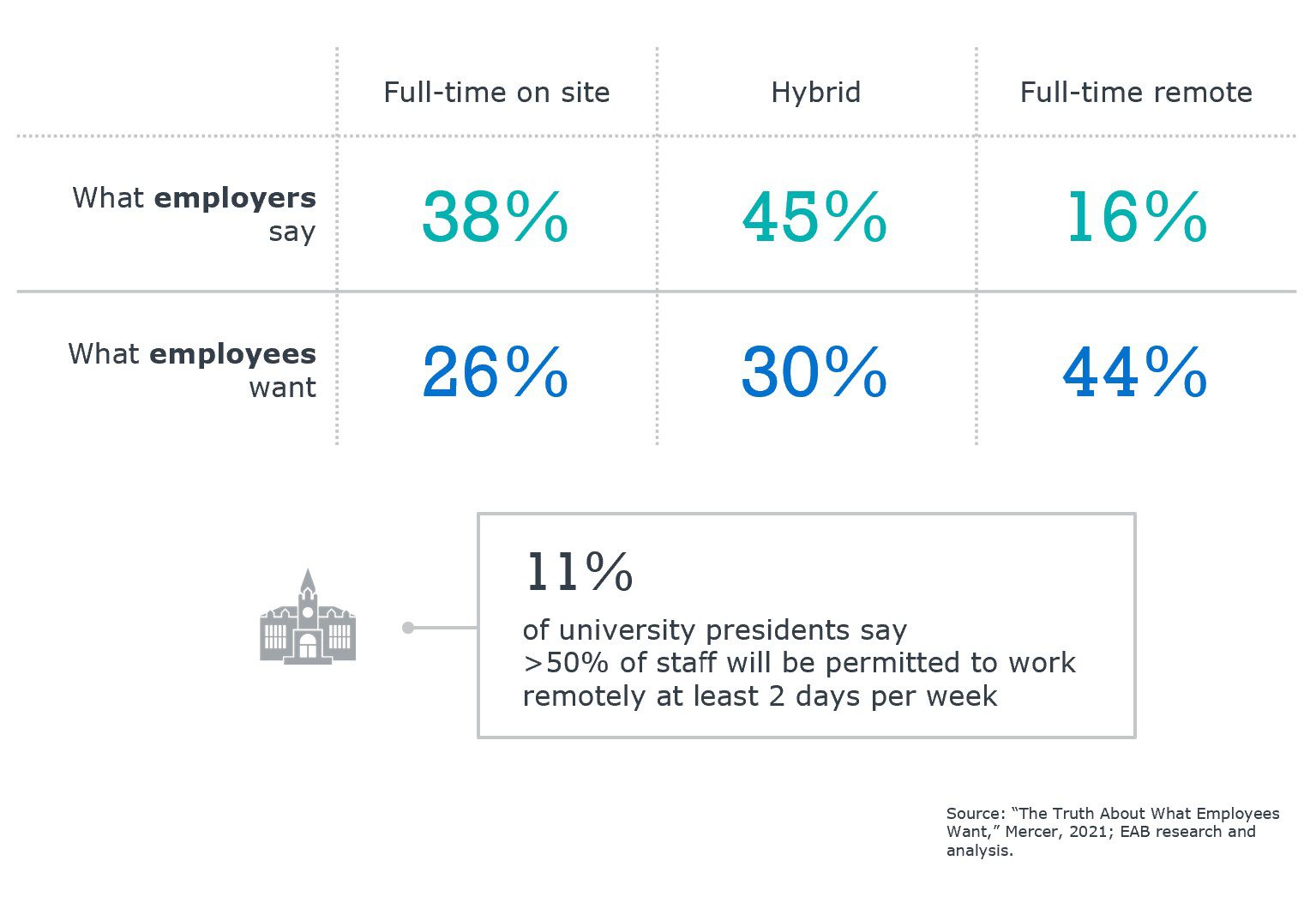How Admissions Teams Should Navigate the Staffing Crisis
Our research team spent the past three months talking to enrollment leaders around the country about the Great Resignation, as part of research undertaken for our new white paper. Here’s what some of the sharpest minds in the admission community are thinking about potential paths forward.
A staffing crisis for enrollment shops
You’ve probably heard that employers nationally are experiencing unprecedented staffing challenges. And chances are you’re seeing persistent vacancies on your own team, as admission offices have been hit especially hard. Our research interviews suggest that a large majority of the nation’s enrollment teams have seen sudden increases in resignations-and unprecedented challenges finding new team members to fill open slots.
These staffing issues in one of higher education’s most critical functional areas have had serious knock-on effects, including a downward spiral of staff departures and increased stress on remaining team members-not to mention poor performance on core elements of student recruitment.
Trouble at admissions offices around the country

What’s causing staffing shortages?
As you’re thinking through responses to similar admissions staffing shortages you might be facing, it’s helpful to understand what’s causing the unprecedented volatility in the nation’s labor markets. Five factors loom large:
- Remote work has created a national marketplace for labor
- The number of working-age people in the US is shrinking
- Many employees have developed a strong preference for remote work
- Higher education lags industry on compensation and flexible-work options
- Resignations and pressure on staff are exacerbating each other
Additional factors have left enrollment teams especially vulnerable to staffing shortages. For example, their approach to recruitment has traditionally placed a high premium on face-to-face interactions, which makes offering flexible work options complicated. Further, the intensity of their work has steadily increased in recent years as competition between colleges has heated up.
Management and staff misaligned on remote work
Percentage of surveyed employers and employees, by remote-work preference

Perhaps most significantly, admissions staff are often paid less than other workers with comparable backgrounds and skill sets in higher education and beyond. Many staff in admissions departments are under the $60K salary threshold, below which compensation becomes the primary driver of staff departures. It’s likely no coincidence that enrollment shops escaping the worst of the admissions staffing crisis are often ones at deep-pocketed institutions-a fact that came up repeatedly in our research interviews. Also suggestive on this point is NACAC research showing that admissions staff leaving their positions but staying in the profession often take jobs at more prestigious-i.e., typically wealthier-institutions.
Typical compensation puts many admissions roles in or near the danger zone

Solutions to staffing shortages
One encouraging finding from our research is that some admissions teams are getting through the staffing crisis more successfully than others, and not just ones at wealthy institutions. Generalizable lessons from their experience fall into six solution categories:
Cut your staff’s workload down to size
Representative tactic: Focus your yield follow-up selectively on those students for whom it can be expected to make a difference—a determination you can make using predictive models.
Accommodate your staff’s flexible-work preferences
Representative tactic: Implement a remote-first policy whereby staff are required to work on campus only when there is a clear and compelling rationale for doing so.
Ensure appropriate compensation
Representative tactic: When lobbying for higher staff pay, show your stakeholders the average amount of revenue each of your counselors generates for your institution.
Create an engaging work environment
Representative tactic: Implement career ladders for your staff, with frequent milestones to acknowledge accomplishments and skills mastery.
Ramp up your staff-recruitment efforts
Representative tactic: Make sure your job postings include messaging on what matters most to candidates, including the opportunity to rapidly develop highly marketable skills.
Optimize your org structure
Representative tactic: Implement beefed-up sub-entry-level positions on your team, creating a pool of staff ready to step in when counselors depart.
What will the future hold for enrollment teams facing staffing shortages?
As we look beyond the current moment to possible futures for enrollment teams, it’s important to consider the potentially permanent nature of some of the factors driving the admissions staffing crisis. For example, it’s hard to imagine employees’ appetite for flexible work arrangements going away. And demographic trends suggest that the overall pool of working-age Americans, already shrinking, will continue to do so-EAB’s own projections put the drop at 6 million by 2028-giving employees continuing leverage over employers. Higher education’s low profit margins, and correspondingly limited flexibility on compensation, will also continue to put colleges and universities at a competitive disadvantage relative to industry.
How will the admissions profession respond? We may need to accept a world in which leaner staffing is the norm, with smaller numbers of more highly paid team members. And we will certainly need to adapt to workers’ demands for flexibility. Both factors may cause us to rethink student recruitment in fundamental ways. For example, admissions shops should consider putting greater emphasis on modalities, including virtual ones, that are a better fit with remote work and that are as effective, but less time-intensive than traditional approaches.
“Changing the demand profile of work requires us to deconstruct jobs, redeploy the component tasks to the most optimal means, including AI, gig workers, or internal marketplaces, and to reconstruct new and fundamentally different jobs.”
Ravin Jesuthasan
Global Leader, Transformation Services Mercer
Perhaps most importantly, enrollment leaders will face an ongoing mandate to create admissions careers that are appealing and distinct from higher-paid alternatives in industry. One key differentiator is the unique opportunity that enrollment positions offer to help students-something we know to be a major factor motivating workers to seek out (and stay) in admissions careers.

More Blogs

What enrollment leaders can learn from Alabama’s statewide direct admissions program

10 tips for a great summer staff retreat
